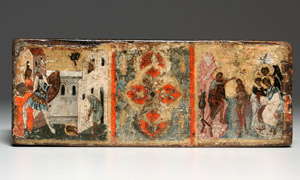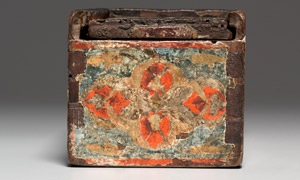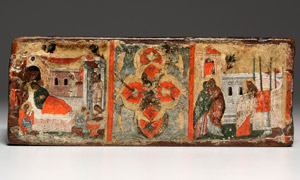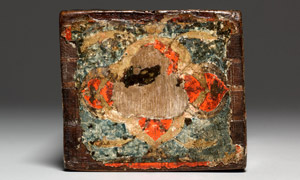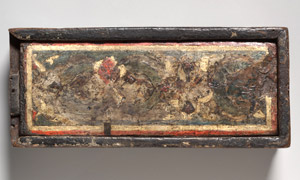Reliquary Box with Scenes from the Life of John the Baptist
The Cleveland Museum of Art, gift of Bruce Ferrini in Memory of Robert P. Bergman
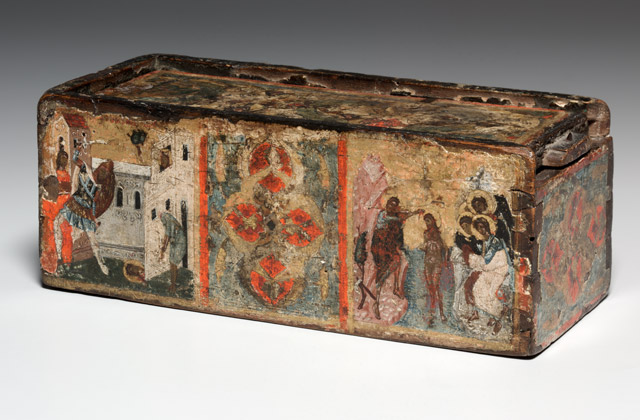
 Select the image to zoom
Select the image to zoom
This small painted wood box shows on its long sides four scenes illustrating the life and death of St. John the Baptist. Interestingly, the narrative runs from right to left, beginning with a combined scene of the annunciation of John's birth to Zacharias and the visitation of Elizabeth and Mary. Following on the left is a scene depicting John's birth and first bath as well as his father's writing down the name of his son on a small tablet. On the box's opposite side, two further scenes illustrate episodes from John's adult life. A scene on the right shows John baptizing Jesus in the river Jordan while three attending angels hold Christ's garments. The last scene shows John's imprisonment and execution following his denouncement of the adulterous relationship between King Herod Antipas and his brother's wife, Herodias.
The Christian cult of John the Baptist emerged early as a result of his prominence in the account of the Gospels, which credit him as the first to recognize Christ as the promised Savior. After his execution at the fortress of Machaerus, his remains were allegedly moved to Sebaste. Despite reports that John's coffin "was opened, his bones burned, and his ashes scattered" during the reign of Julian the Apostate (Theodoret, Ecclesiastical History 3.3), Christian pilgrims such as Egeria in the 380s continued to visit his tomb. His head, however, was taken to the capital, where it was solemnly deposited on 18 February 391 in a church, richly endowed by Emperor Theodosius I. Over the centuries, at least thirty-six churches were dedicated to St. John the Baptist in Constantinople alone, attesting to his exceptional status among the saints and martyrs venerated in the Byzantine Empire.
The painted wood box likely served as a container for one of the saint's relics. Several such relics—two fragments of his skull, his right arm, and locks of his blood-clotted hair—were kept and venerated in churches and monasteries at Constantinople into the late Byzantine period.
